Home » Posts tagged 'soup'
Tag Archives: soup
Making Miso Happy Part 1
Miso is the very essence of the fifth flavour umami, that enigmatic taste of ‘savouriness’ or ‘deliciousness’ and forms the flavour base of so many Japanese dishes. At its heart it is basically a fermented mix of soy beans, rice, koji (aspergillus oryzae, the national mould of Japan – really!), salt, water and time…
Like many Japanese foodstuffs, miso has regional variations. As a general rule (and there are always exceptions) the colour of finished miso is darker in the north, and lighter in the south of the country. Kyoto is famous for sweet white miso, for example. This means that it is possible to encounter a wide variety of miso on your travels – from rich umami to salty to sweet and with textures from smooth to chunky.
We visited a miso factory/koji park on a trip to Kanazawa on the western coast of Japan. Shinkansen (bullet train) construction reached Kanazawa just recently, in 2015, and the city is now easily accessible from Tokyo; the journey takes around 2.5 – 3 hours. It’s a great city with a lively market (which has some amazing seafood restaurants) and one of the top three gardens in Japan. The miso factory is located at Ohno machi (Ohno port), which is a bit of a journey; you can catch a bus from the Kanazawa station area (ask for the location of the bus stop at the tourist information centre inside the station concourse – it’s a five minute walk away) and it’s the very last stop. When you arrive at the sea you are there. You’ll likely be the last ones on the bus. Alternatively you can get a taxi. The journey from the station takes around 20 minutes but the cost is considerably higher than the bus. Then just walk over the bridge to the little island.
As an aside, at the far end of the island is a charming museum of mechanical toys which has a brilliant hands-on exhibition where you can spend hours playing games and enjoy viewing antique toys and games. The staff were absolutely delightful and very much wanted to make sure we enjoyed the exhibits. They were also very helpful when it came to supplying a timetable for the bus journey back into the centre of Kanazawa.

There are many historic mechanical puppets – karakuri – on display. The museum is a memorial to Benkichi Ohno,a master craftsman who lived in the area from 1831. Many of his creations can be seen at the museum.
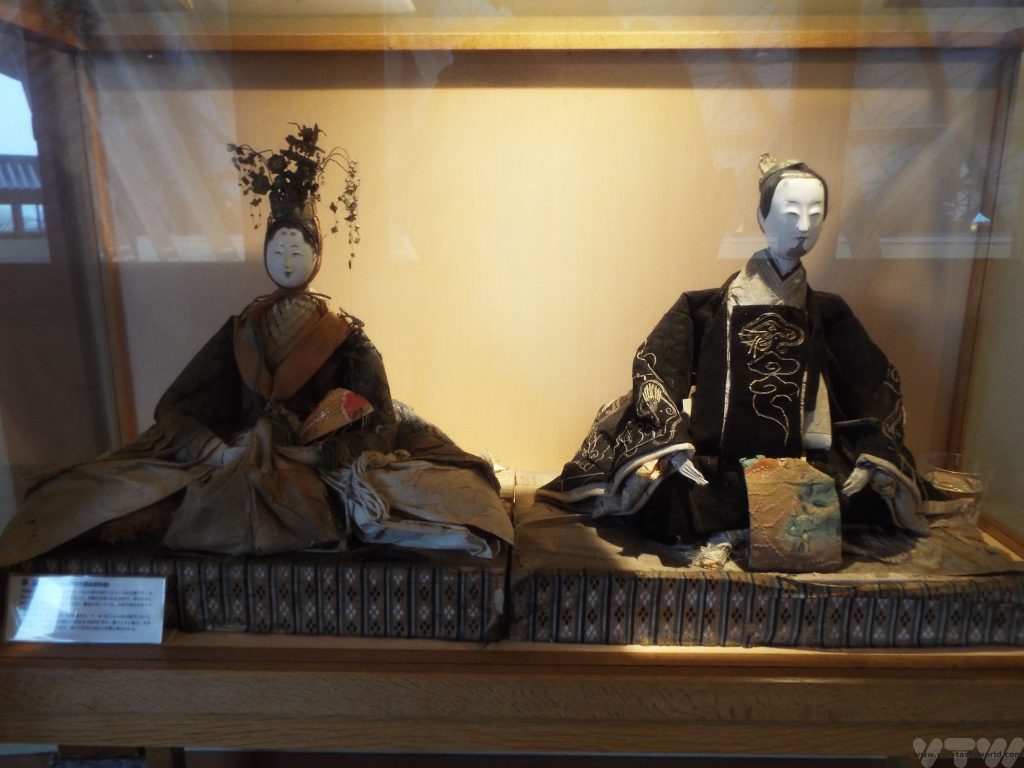
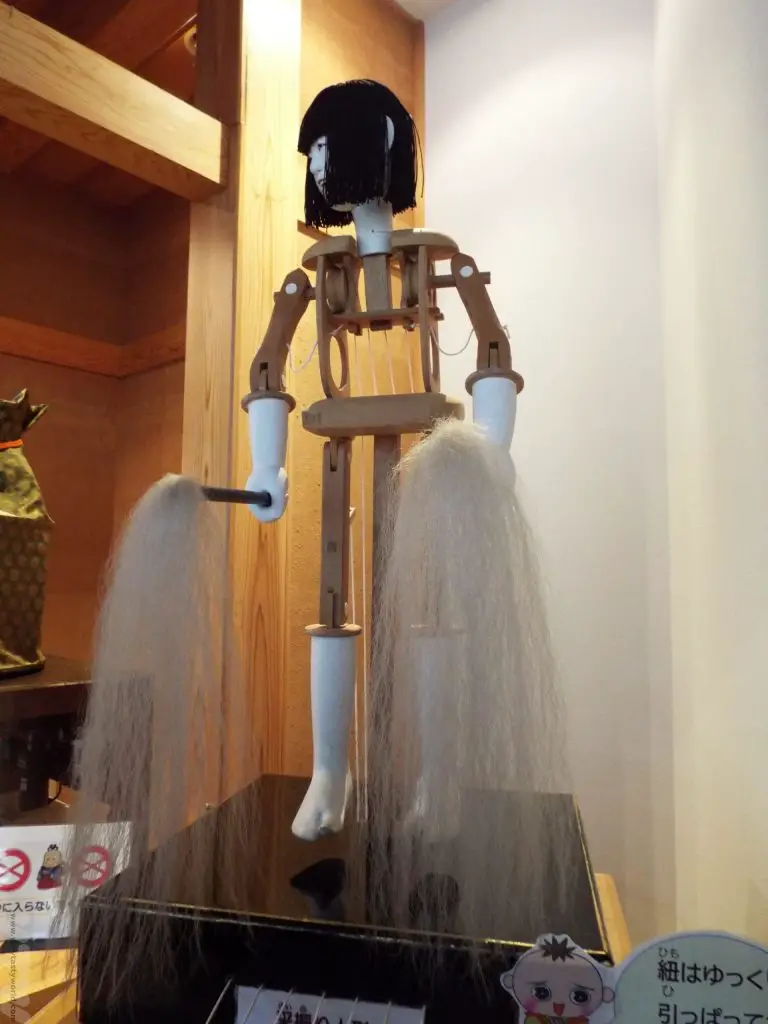
Some exhibits show you how the puppet mechanisms work.
Some dolls are cute(ish) which turn into scary (incidentally these words are, respectively, kawaii and kowaii in Japanese, be careful not to confuse the two!).


Around the circumference of the main building there are tables and chairs set out with all sorts of puzzles that you can try to solve.

It’s a really hands-on museum and it was lovely to see families with children of all ages sitting together and working out solutions to some of the puzzles.
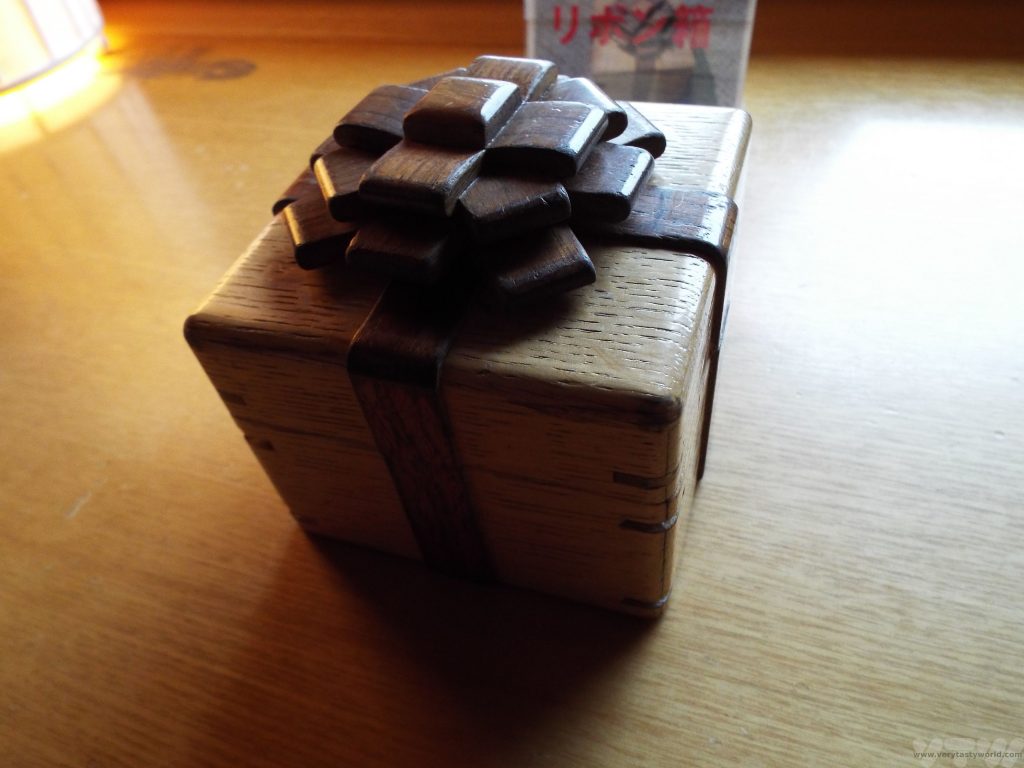
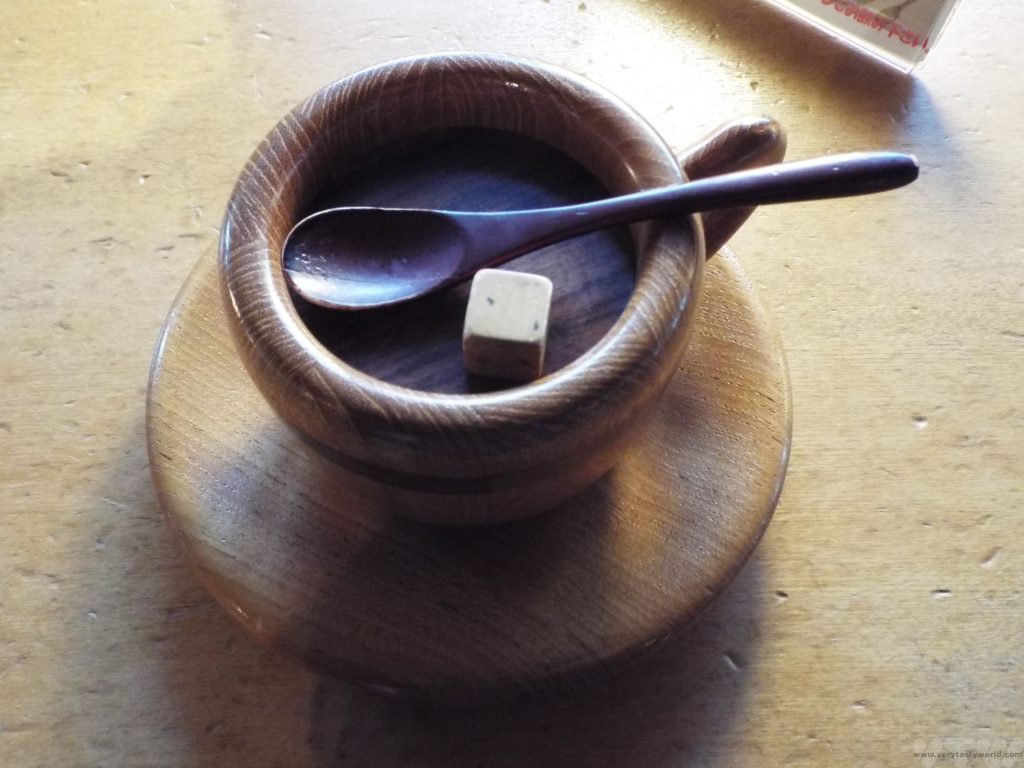
This doll is 300 years old, from the Edo period. The craftsmanship is exquisite.

Just as we were leaving the park, the heavens opened and the rain started lashing down. We started to make a dash but a lovely staff member ran after us, brandishing an umbrella. We thanked her kindly but explained that we were British and were used to lots of rain. No, they insisted, and gave us a brolly so that we wouldn’t get wet. We’ve experienced this sort of kindness all over Japan, a welcoming generosity that just makes us love the country more and more.
So, after a lovely diversion, it was on to the Yamato koji park, just a 10 minute walk (or 5 minute trot in the rain) away at the other end of the island. It’s part factory, part museum, part shop and part café. There weren’t any specific tours when we visited but the staff were super-helpful and directed us to a display where we could understand how miso is made.
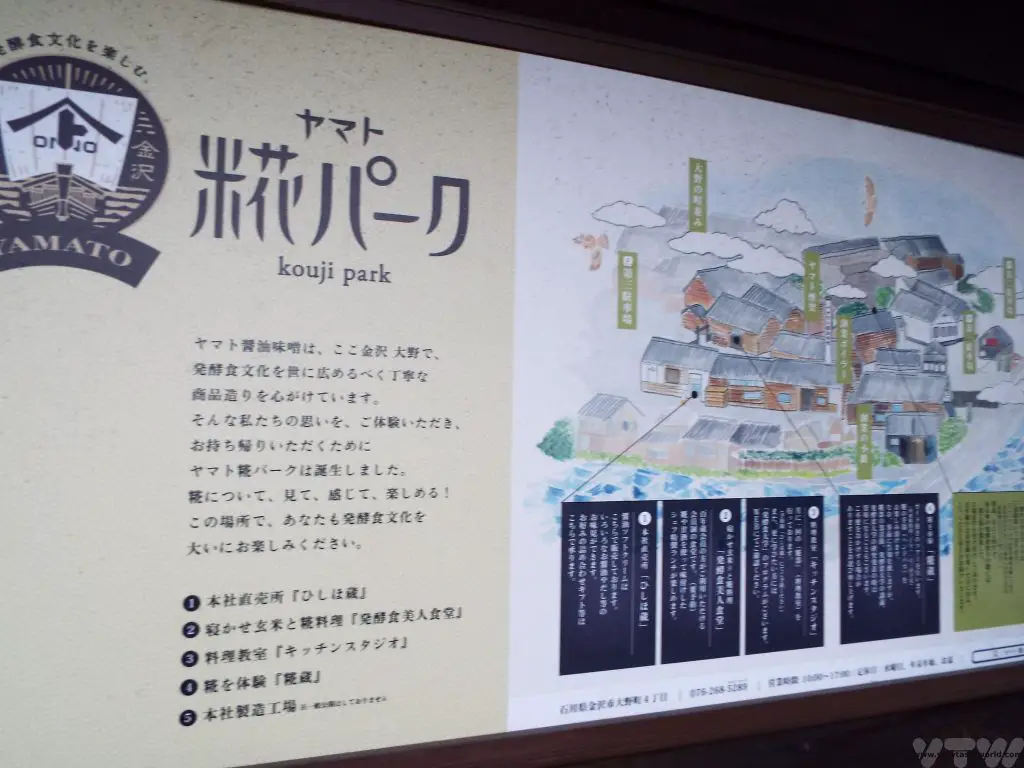
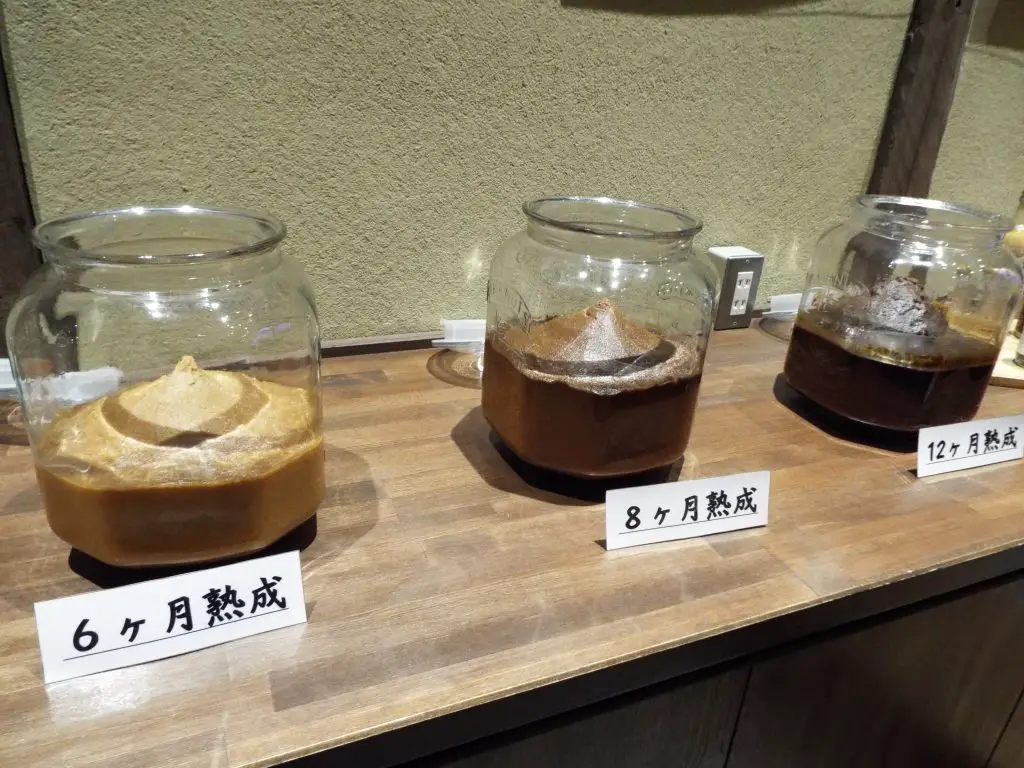
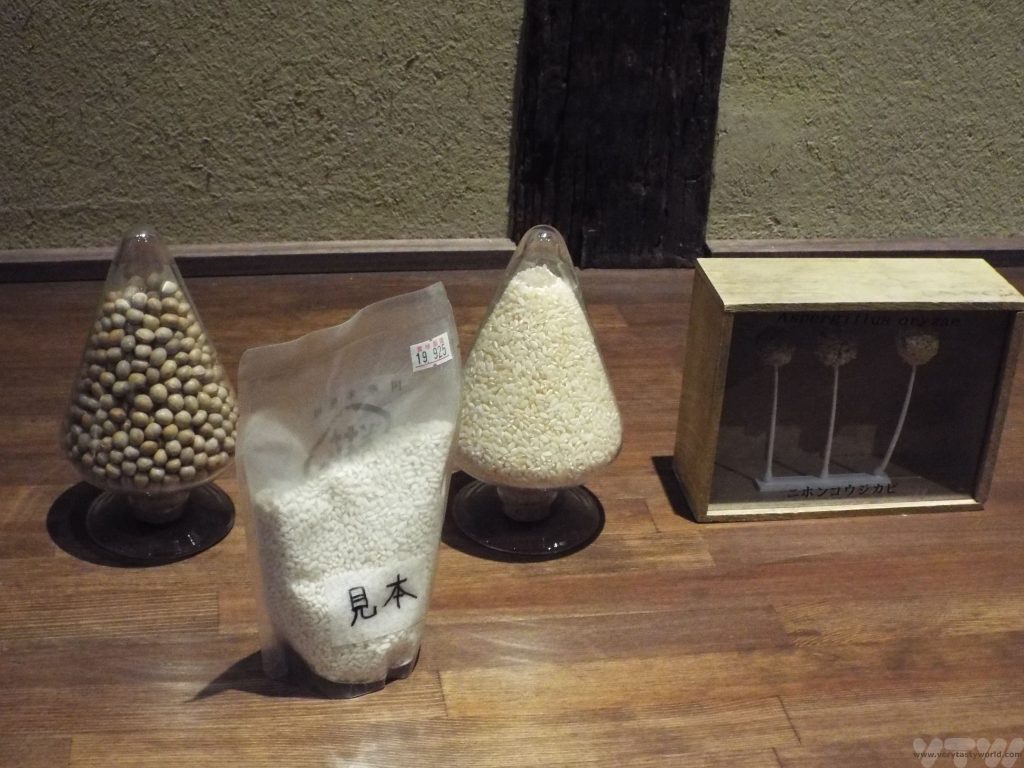
Miso basically contains five ingredients: water, koji, soy beans, rice, salt. Koji thrives on the rice. Then it is mashed with the soy beans, salt and water. After about six months yeast forms. The miso flavour develops thanks to the interactions between the yeast and the koji. Fermentation can take as long as three years.
Soy sauce is made using a very similar process and ingredients to miso but uses wheat instead of rice. A mash is formed and then it’s pressed (like olives for olive oil). After fermentation, the resulting liquid is soy sauce. It was fascinating to taste the difference between pasteurised and unpasteurised soy sauce. Unpasteurised soy has a more complex flavour because some of the heady aromas are lost in the pasteurization process.
Some the the traditional fermentation vessels are enormous. This was over two metres in height.
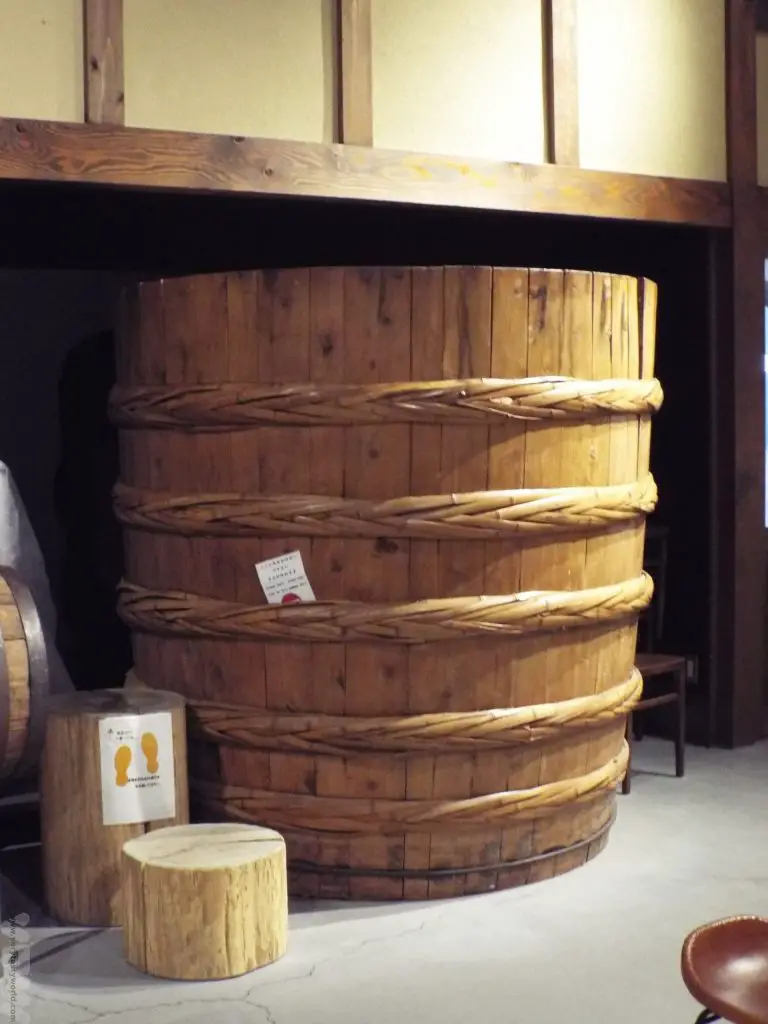
You can also dip your hands into a koji hand bath which will, apparently, give your skin a soft and delicate sheen. It’s quite nice to be able to dip your hands into a warm bath, especially on a cold, wet day. Apparently two minutes is the optimum time – there is a timer so you can check. And yes, we can confirm that our hands did emerge from the bath silky-smooth.
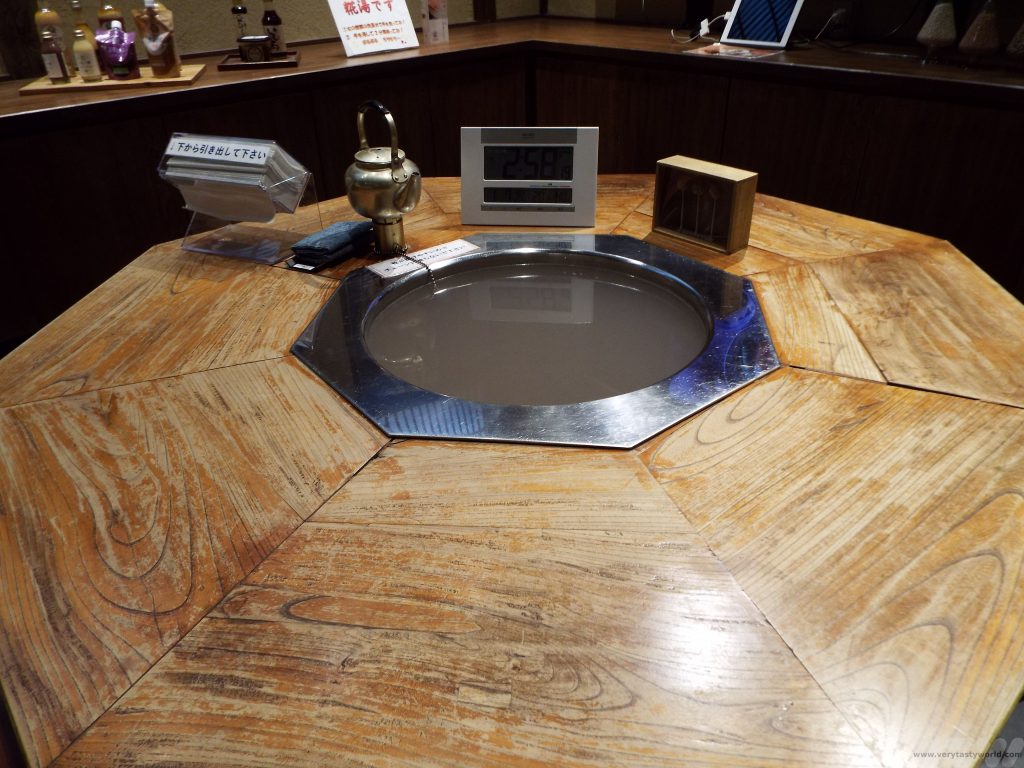
There is a shop with an extensive variety of products and you are able to sample before you buy. It was particularly interesting to be able to taste different sauces and compare the flavours.
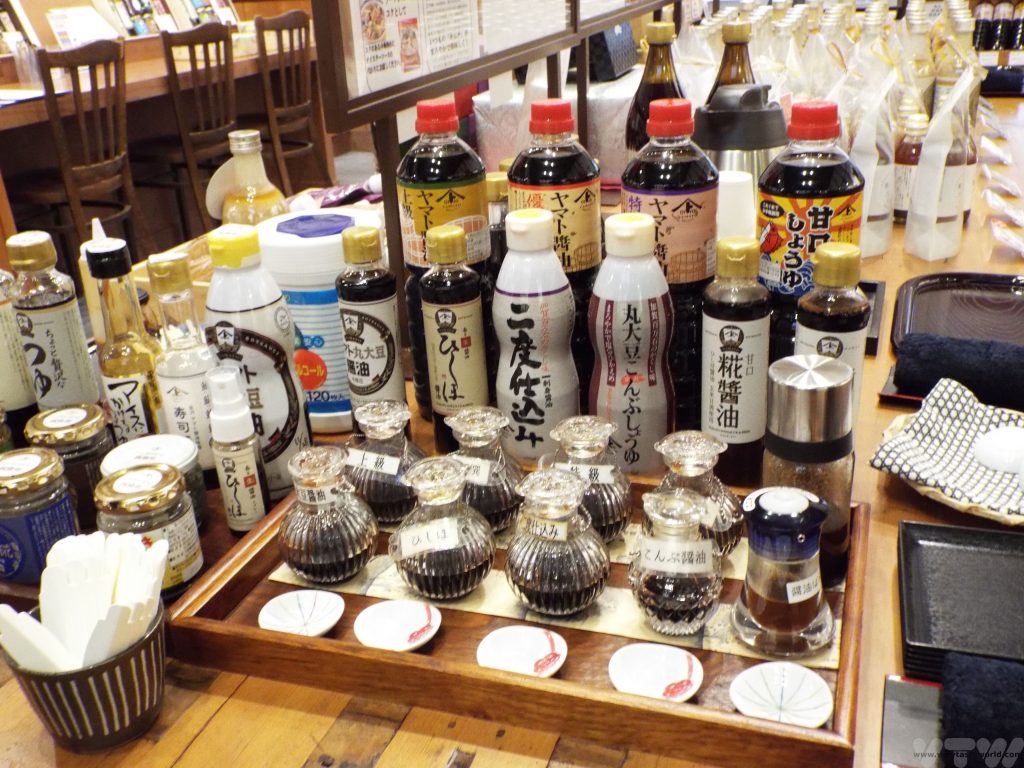
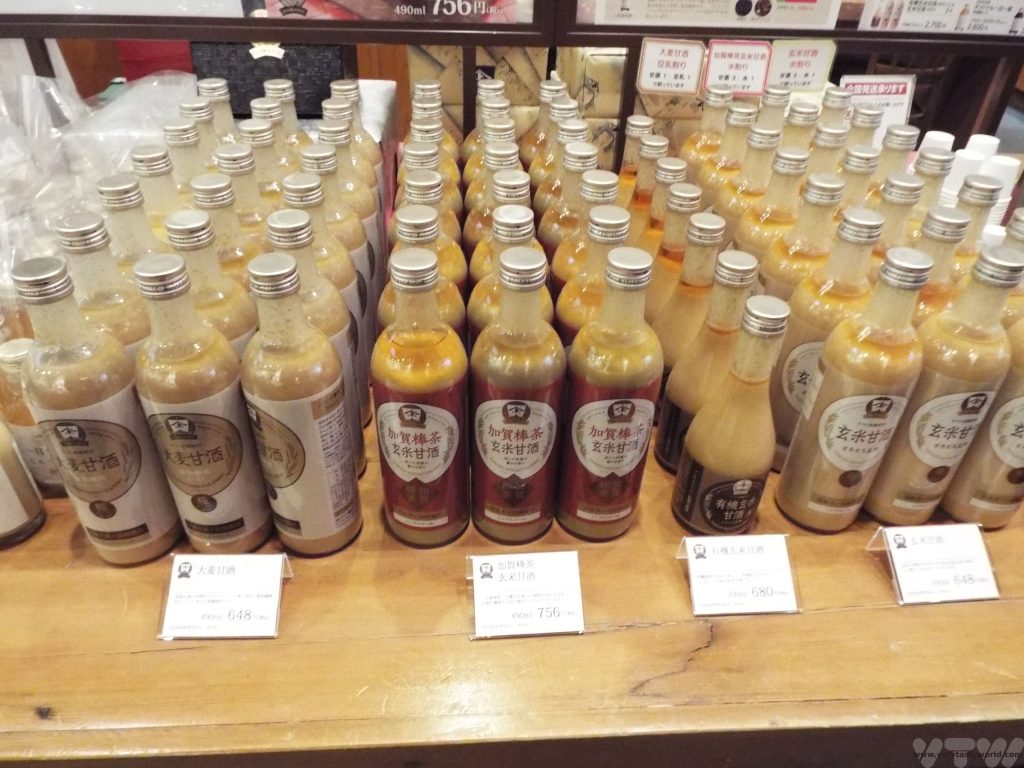
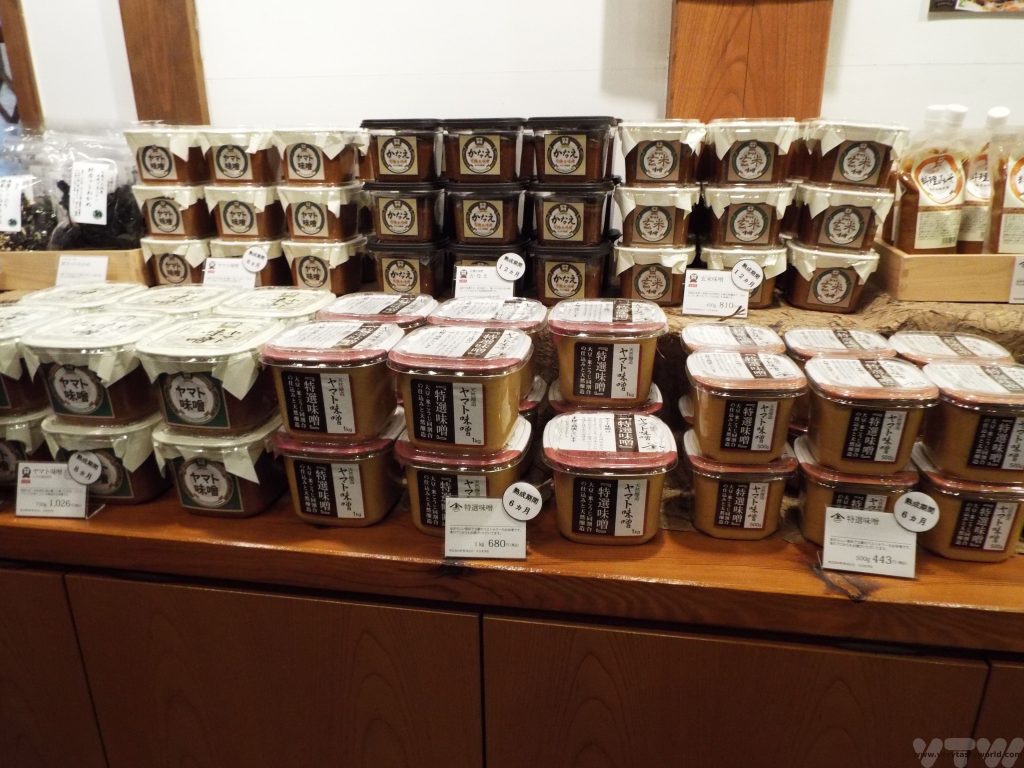
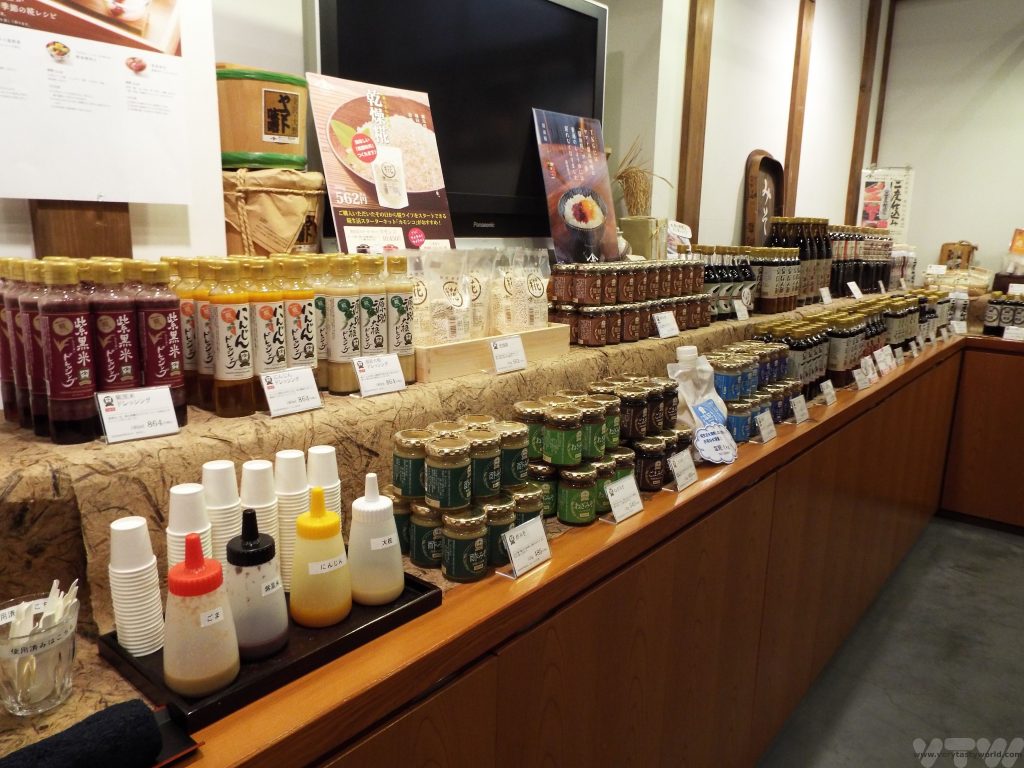
Amazake is a sweet, low alcohol drink made from fermented rice and koji. Amazake literally means ‘sweet’ (ama) ‘sake’ (sake, which can be used to describe alcohol). You can buy the paste, mix with hot water and drink. It tastes sweet and has a smooth, creamy texture. And for a delicious dressing, you can mix amazake with ponzu soy sauce (ponzu is a citrus juice comprising Japanese fruits sudachi, yuzu, and kabosu and vinegar mixed with soy sauce to give an amazingly tangy, salty flavour) in the ratio 1:1.
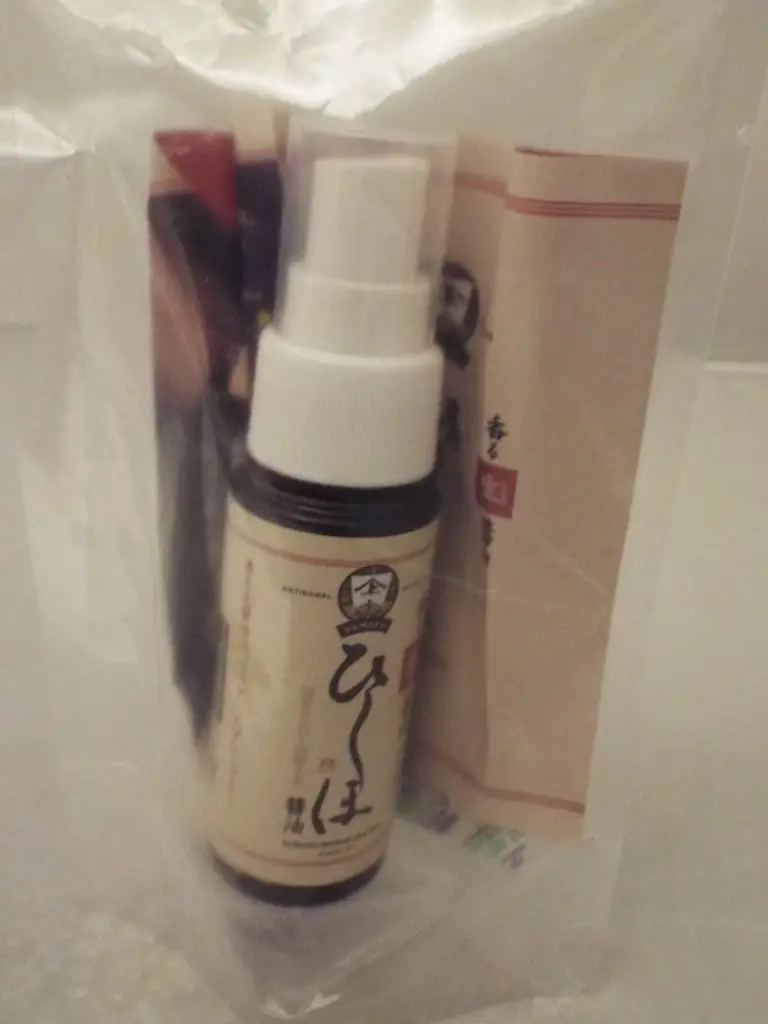
And one of the best foodie souvenirs ever – for the adventurer who cannot travel without seasoning – spray soy sauce, conveniently packaged in a container that would even fit into your hand-baggage.
They also have a café and ice-cream maker. Amazake and soy sauce ice-cream were on offer and we tried both. Soy sauce ice cream sounds so wrong but it was delicious, full of rich salty umami flavour that complemented the creamy sweet ice-cream.
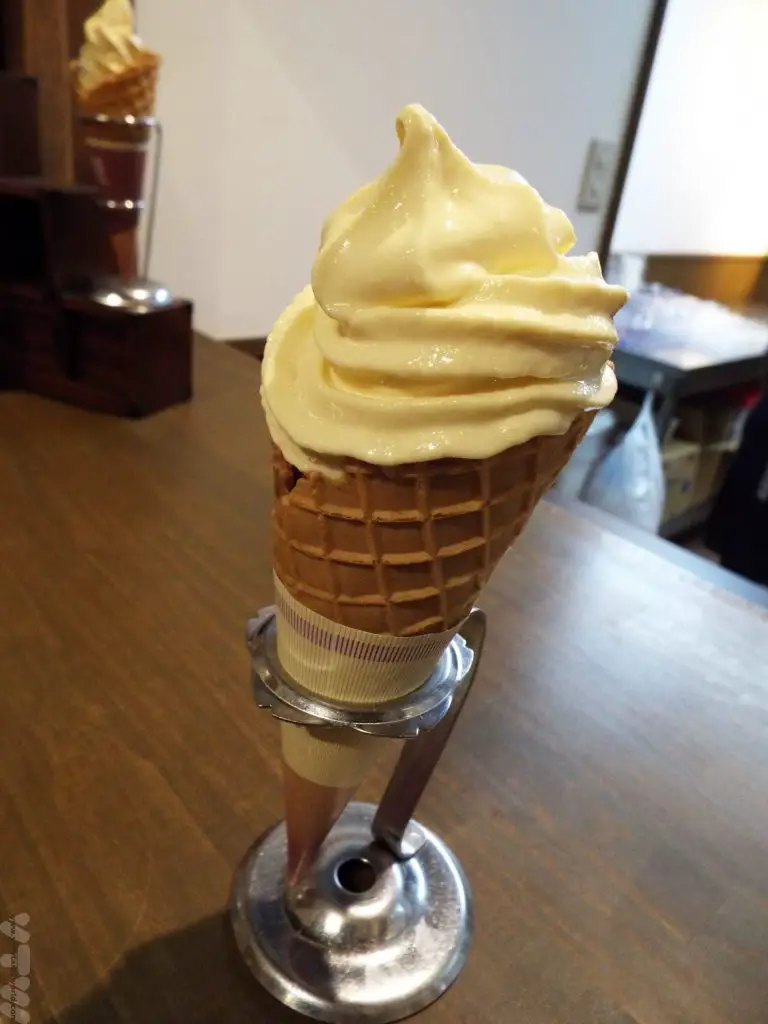

What was also rather lovely was that the CEO, Mr Yamato, was on site that day and came to say ‘hello.’ We can’t think of many companies where the boss would greet some very enthusiastic, albeit extremely damp, tourists.
We shopped for as many products as we could fit into our luggage. One particular packet that we were very happy to find was that of inoculated rice koji. It was also conveniently flat for packing and much cheaper than koji that we can purchase in Europe.
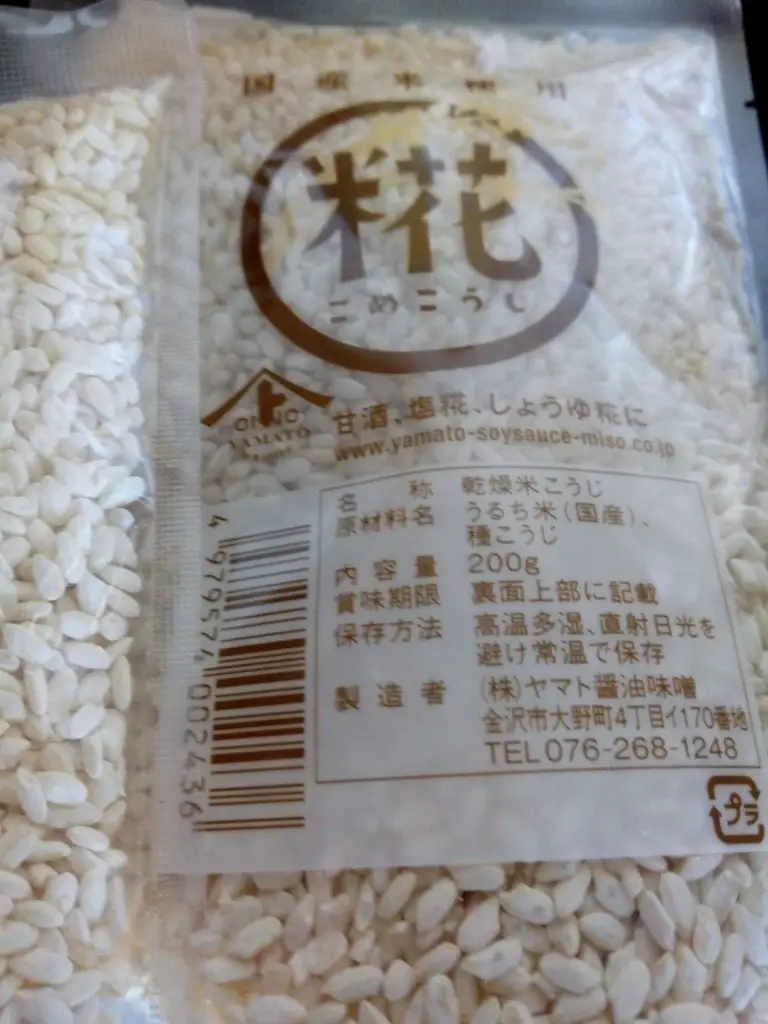
Making our very own miso was most definitely going to be one of our foodie missions on our return home. And this is how we made it…

- Recipe: Simmered Shiitake Mushrooms
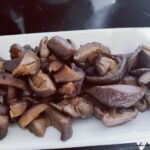
- How to Use Public Transport in Japan

- RECIPE Oyakodon Donburi

- Planning a Trip to Japan

- The Makanai: Cooking for the Maiko House

- Setsubun Food – Bean Throwing Day

- The Gassho Farmhouses of Rural Japan

- Recipe: Japanese Simmered Pork Belly – Buta no Kakuni

- RECIPE: How to Make Umeboshi

Red Square and Red Soup in Russia
When we were travelling in Moscow, in between visiting Red Square and the Kremlin, we ate lunch with a local guide who declared, “Russians do not consider a meal to be a meal unless it has soup.” Which seems to be an entirely reasonable sentiment.




Borscht isn’t a favourite soup in the UK, largely because beetroot isn’t considered to be a particularly tasty vegetable by many. You are more likely to find it pickled in very sharp vinegar which detracts from the earthly flavour of the beet and sets your teeth on edge. But soup based around beetroot is popular all over Eastern Europe, from Poland to the Baltics to Ukraine, of course, Russia. It is best known for its deep red colour, derived from beetroot of course, but other vegetables such as potatoes, celery, parsnips, cabbage and carrots can also feature. Traditional borscht uses meat or bone broth as the stock along with fermented beetroot juice which gives a wonderfully sour flavour and complements the earthy sweetness of the beetroot.
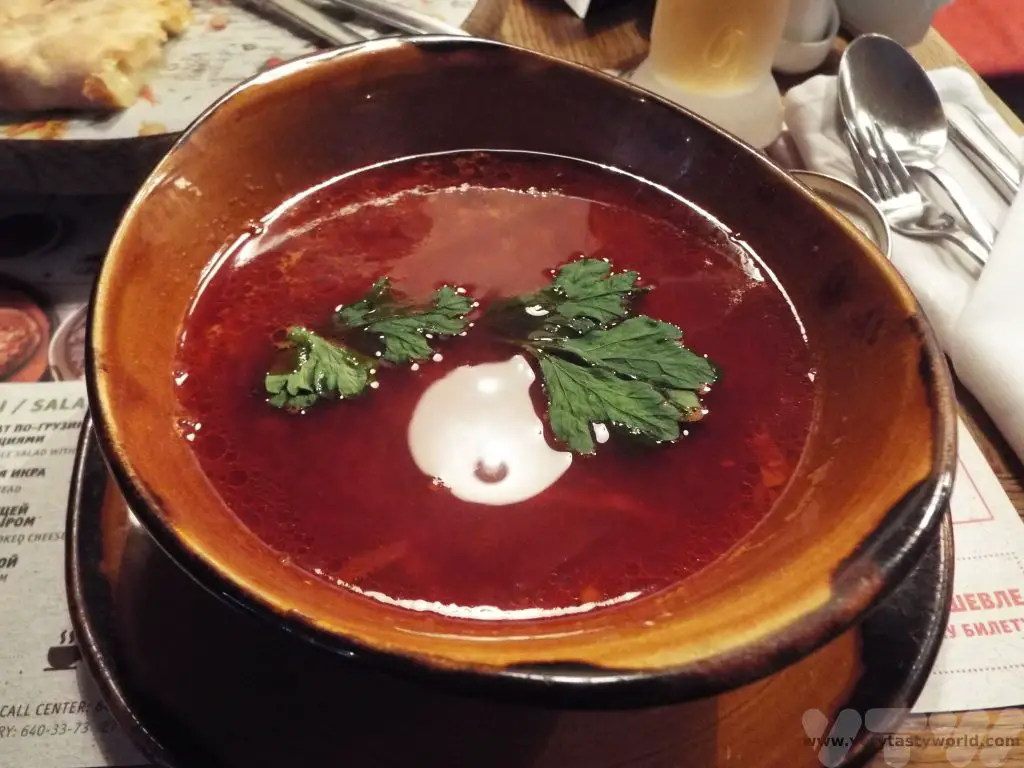
We’ve been growing beetroot in our garden for many years and had a bumper crop last year. They are easy to grow – being root vegetables they can pretty much be left alone after you’ve sown the seedlings and slugs don’t seem to want to eat them. They’ll need just a bit of watering if the weather is particularly dry for a prolonged period, and they will overwinter in the ground without any problems, even enduring frosts and cold weather, to be picked any time. Which is great, because winter time is the best time to be eating a warm, hearty soup.
We had quite a glut last year so ended up making quite a lot of soup. It should probably be described as ‘Borscht-ish’. It is so easy to make and very delicious. There are loads of recipes out there but we went for a very simple approach.
Quick aside for planning ahead: Whenever we roast a chicken we always use the carcass to make a stock. It’s so easy – chuck the bones into a pan, cover with water and boil for a couple of hours. Then strain off the liquid and… instant stock. You might want to skim off any scum, then let it cool down and you can also remove any fat that floats to the surface should you wish (or not, fat does add flavour). Once the stock is made it can be frozen for several months.
Our soup ingredients are very simple:
3-4 beetroot, peeled and cut into cubes. (Wear gloves if you don’t want bright red fingers.)
A couple of litres of chicken stock. If you are vegetarian you can use vegetable stock cubes.
Knob of butter
Two cloves of garlic.
Salt and pepper
A generous dollop of sour cream. Shamefully, we didn’t have any dill to add a green flourish.
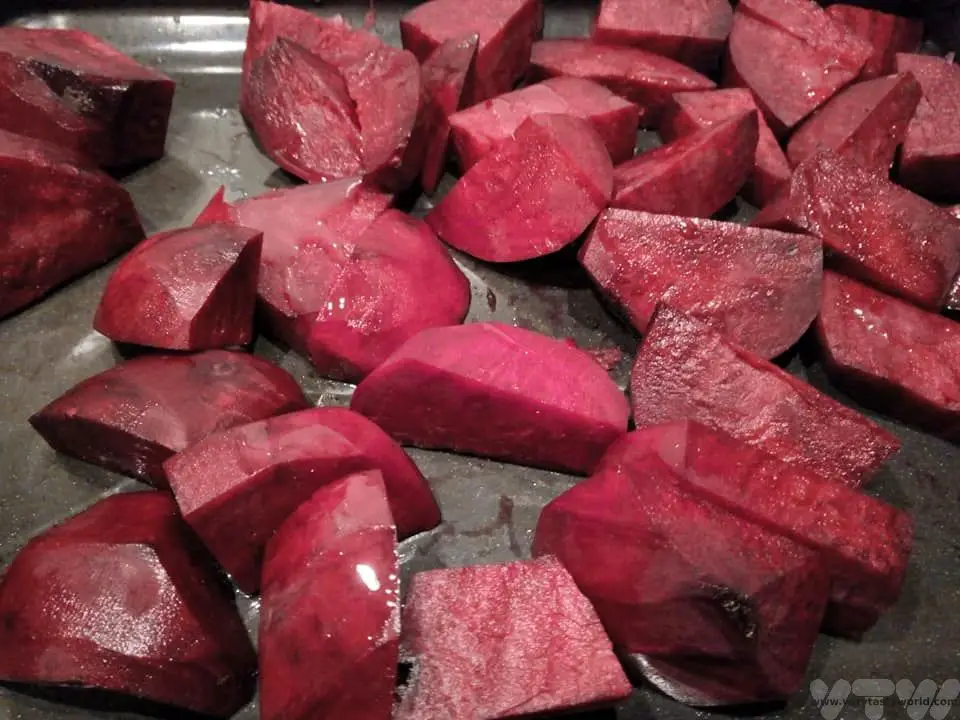
Crush the garlic and fry off in the butter.
Add the beetroot cubes and stock to cover all the ingredients. Season with salt and pepper to taste.
Bring to the boil then simmer for about 30 mins until the beetroot is soft and cooked but not mushy.
Blend with a hand blender or in a standard electric blender. The advantage of the hand blender is that you can easily achieve the precise soupy consistency that suits you. The disadvantage of a hand blender is that you stand a very good chance of getting soup all over the walls if you aren’t very co-ordinated.
Then dollop a generous spoonful of sour cream and garnish with dill if you remembered to get some. Eat with thick hunks of bread.
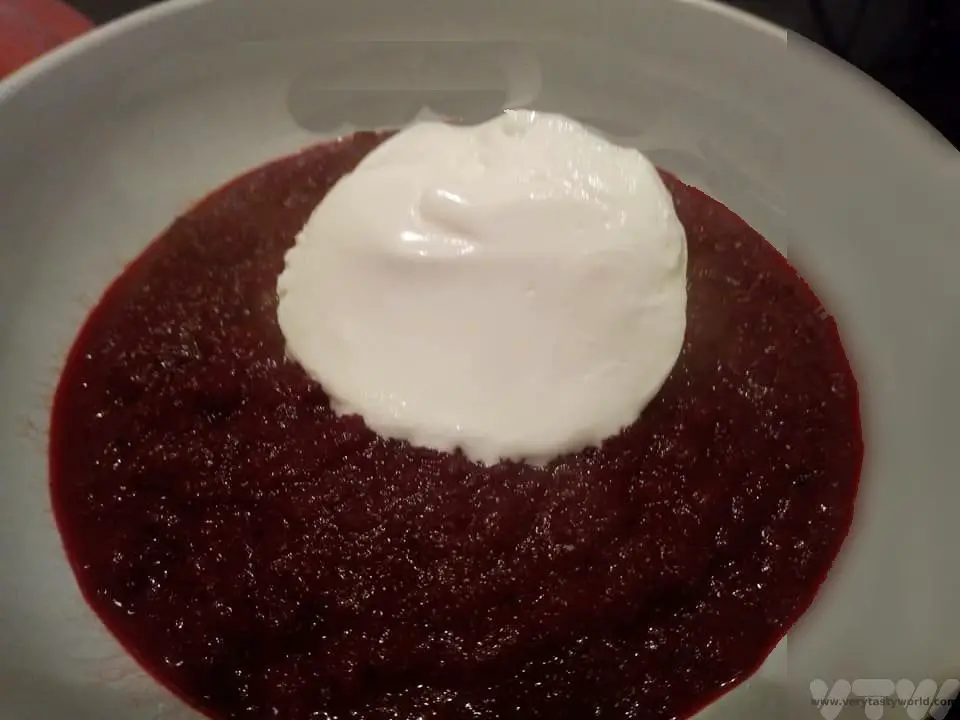
And yes, we did make a glorious mess of the kitchen.
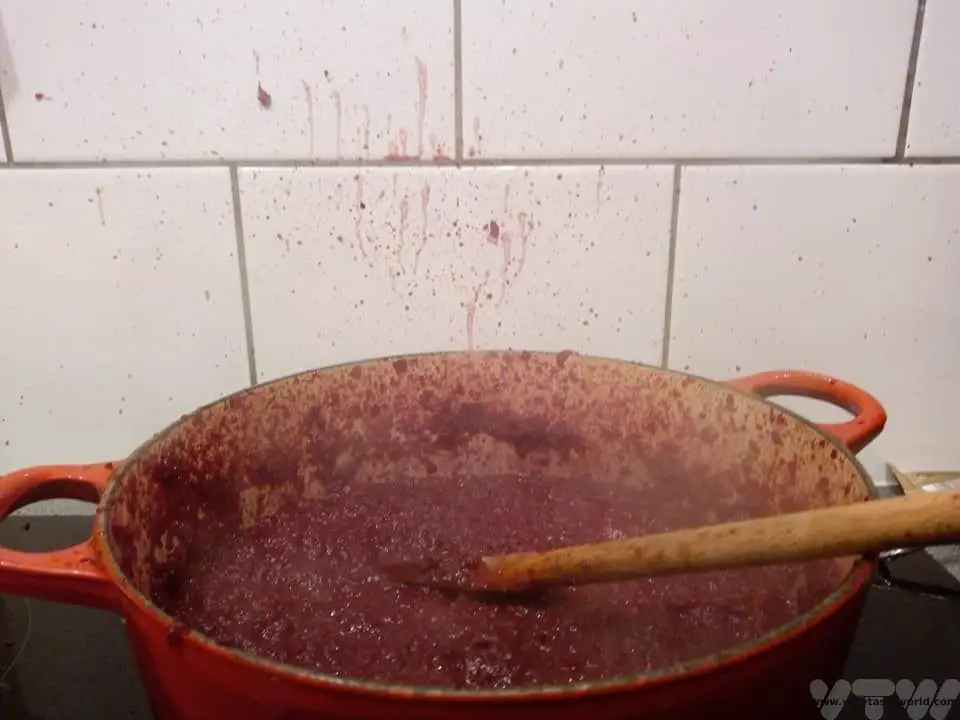

- Things To Do In Rovaniemi In Winter
- Avebury Stone Circle vs Stonehenge
- Five days in Copenhagen
- Is Sarajevo Worth Visiting?
- A Svalbard Holiday – Land of the Midday Moon
- Afternoon Tea in Coventry

- RECIPE Oyakodon Donburi
- Zero Waste Recipes Before Your Holiday
- RECIPE: Vegetable Biryani Tamil Nadu Style
- RECIPE: Vegan Wild Garlic Pesto
- Recipe: Venetian Pasta Sauce
- RECIPE: Biryani Raita Recipe
- RECIPE: How to Make Costa Rica’s Gallo Pinto
- Recipe: Japanese Simmered Pork Belly – Buta no Kakuni
- RECIPE: How to Make Umeboshi













